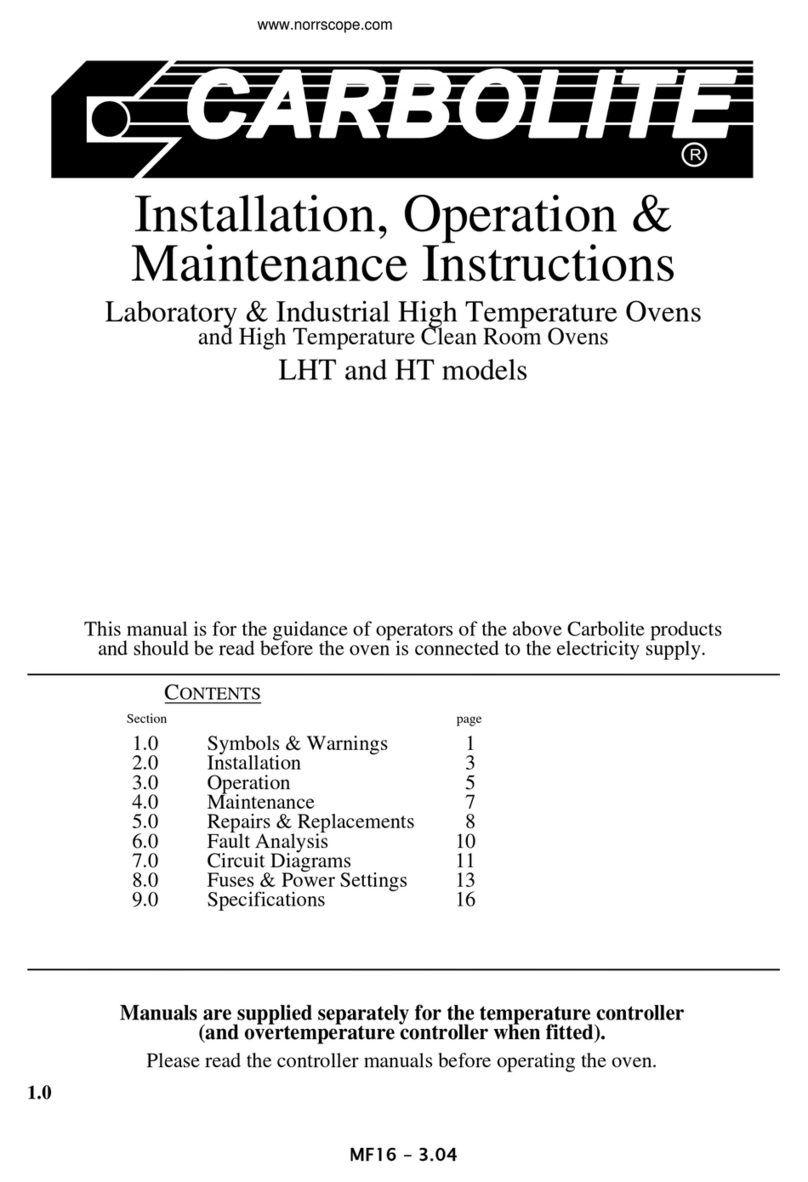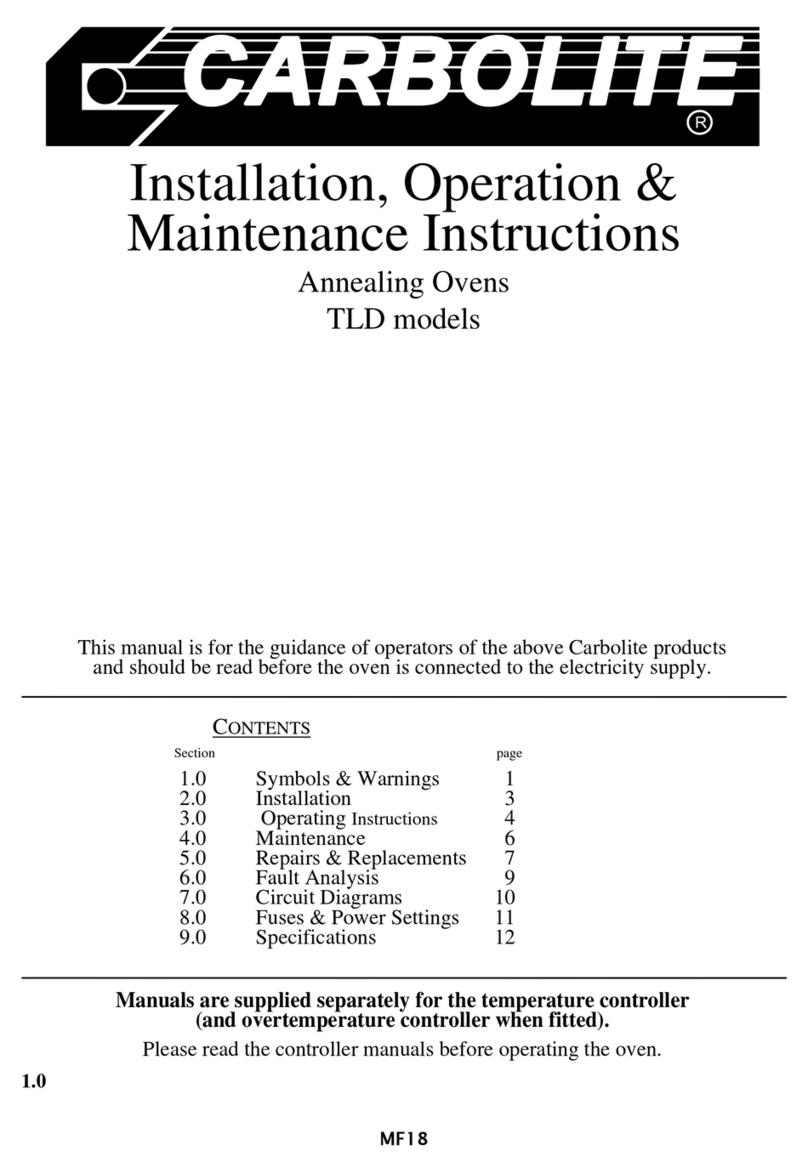Clean Room Ovens
4.0 MAINTENANCE
4.1 General Maintenance
No routine maintenance is required other than the occasional replacement of consumable items.
The oven outer surface may be cleaned with a damp cloth. Do not allow water to enter the interior
of the case. Do not clean with organic solvents.
The fan motor is sealed for life; no lubrication is required.
4.2 Calibration
After prolonged use the controller and/or thermocouple could require recalibration. This would be
important for processes which require accurate temperature readings. A quick check using an
independent thermocouple and temperature indicator should be made from time to time to
determine whether full calibration is required.
For a quick check of the temperature shown by the control thermocouple and oven controller, a
portable temperature indicator and probe thermocouple may be used. Carbolite can supply these
items.
Depending on the controller, the controller manual may contain calibration instructions.
4.3 After Sales Service
Carbolite’s service division (Thermal Engineering Services) has a team of Service Engineers
capable of repair, calibration and preventive maintenance of furnace and oven products at our
customers’ premises throughout the world. We also sell spares by mail order. A telephone call or
fax often enables a fault to be diagnosed and the necessary spare part despatched.
Each furnace has its own record card at Carbolite. In all correspondence please quote the serial
number, model type and voltage given on the rating label of the furnace. The serial number and
model type are also given on the front of this booklet when supplied with a furnace.
To contact Thermal Engineering Services or Carbolite see the back page of this manual.
4.4 Recommended Spares Kits
Carbolite can supply individual spares, or a kit of the items most likely to be required. Ordering a
kit in advance can save time in the event of a breakdown. Each kit comprises a fan and motor
assembly, a thermocouple, a solid state relay, an instrument switch, an element or set of elements,
and a door seal. Individual spares are also available.
When ordering spares please quote the model details as requested above.
4.5 Power Adjustment
The control system incorporates electronic power limiting, but in these models the power limit is
set to 100% and the power limit parameter OP.Hi may be inaccessible to the operator.
Rarely, in the case of uncommon voltages (e.g. outside the range 220-240V or the 3-phase
equivalent), the power limit parameter may be set to a value other than 100%. Do not increase the
value to 100%. See section 8.2 for details of any power limit settings.
Occasionally the power limit is set to zero to permit demonstration of the controls without the
heating elements taking power. In this case the power limit is accessible to the operator and may
be reset to its standard value, usually 100.
6 MF21





























